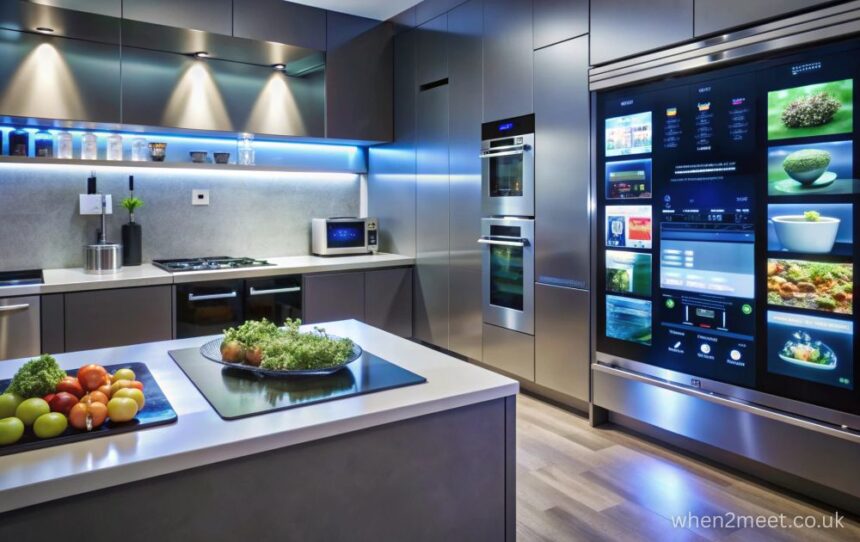When homeowners begin planning a kitchen or bathroom remodel, one of the biggest questions is how far the renovation should go. Some projects call for a complete overhaul with new layouts, walls moved, and plumbing redirected. Others can achieve impressive results with more targeted updates, like replacing fixtures, refreshing surfaces, or giving cabinets a new face. Making smart decisions not only protects your budget but also ensures your investment holds up for years. According to remodel works bath & kitchen design, the most successful projects balance style, function, and cost efficiency to maximize long-term satisfaction.
Knowing When Refacing Is Enough
Cabinetry often dominates both the look and budget of a remodel. Full replacements can be transformative, especially when the layout no longer works or the cabinets are structurally failing. But in many homes, the bones of the cabinetry are solid, and the layout still serves the household well. In these cases, refacing offers a budget-friendly and efficient option.
Refacing typically involves applying a new veneer to the existing cabinet boxes, installing updated doors and drawer fronts, and replacing hardware. The kitchen instantly takes on a refreshed look without the expense of ripping everything out. Homeowners can save thousands of dollars while still enjoying a dramatic visual change. The key is assessing whether the current cabinet structure is sound enough to support a facelift.
When Replacement Becomes the Smarter Investment
On the other hand, there are situations where replacement is the only path that makes sense. If cabinets are warped, water-damaged, or poorly constructed, no amount of veneer will extend their life. Replacement also makes sense when the layout is inefficient. For example, kitchens built decades ago often have minimal storage or lack the flow modern households expect.
Replacing cabinets provides an opportunity to rethink everything from drawer organization to pantry placement. It also opens the door to fully customizing finishes, wood types, and configurations. This level of control can be especially appealing to those who want their space to feel tailored rather than retrofitted. Pairing new cabinetry with updated flooring, lighting, and beautiful kitchen countertops and backsplashes ensures the remodel feels fresh from top to bottom.
Small Upgrades That Deliver Big Impact
Even without full cabinet replacement, smaller upgrades can completely change the mood of a kitchen or bathroom. Swapping out old light fixtures for modern pendants or recessed lighting instantly brightens the space. Replacing faucets and hardware with sleek, high-quality finishes ties the look together. Adding new mirrors or frameless shower doors in a bathroom can make the entire room feel larger and more refined.
These upgrades also offer flexibility. Homeowners can choose to do them all at once or gradually over time, aligning with their budget and lifestyle. The trick is prioritizing which elements will make the most noticeable difference without disrupting existing structures.
Balancing Design Trends With Timeless Choices
Trends in remodeling can be tempting. Bold cabinet colors, patterned tiles, and statement lighting often dominate design magazines and online inspiration boards. While these choices can be exciting, they sometimes date a space more quickly than expected. A balance between timeless materials and a few trendy accents often delivers the best outcome.
For example, neutral cabinetry paired with natural stone or quartz countertops can serve as a long-lasting foundation. Homeowners can then experiment with bolder backsplashes, paint, or décor that can be updated down the road. This layered approach helps maintain flexibility without locking the household into a look that could feel outdated within a few years.
Why Budget Transparency Matters
One of the most common frustrations during remodeling is discovering hidden costs. A clear understanding of what is included in a quote helps avoid stress later on. Transparent pricing should cover materials, labor, permits, and cleanup. It is also important to ask about potential surprises, like electrical updates or plumbing rerouting, which may not surface until demolition begins.
Working with a contractor who provides itemized costs and explains where money is being spent makes it easier to prioritize. Homeowners can then decide whether to allocate more to high-impact features like cabinetry or invest in behind-the-scenes upgrades like improved ventilation or energy-efficient lighting.
Visualizing the Finished Project
One of the most exciting steps in remodeling is seeing a preview of how everything will come together. Design software and 3D renderings now allow homeowners to view their spaces before the first hammer swings. These tools help fine-tune details like countertop colors, cabinet finishes, and tile placement. They also reduce uncertainty by ensuring design choices complement one another.
Even traditional tools like design boards and samples play an important role. Holding a swatch of tile next to a countertop sample in natural light can reveal whether tones clash or harmonize. The more time spent on visualization, the more confident homeowners feel in their final selections.
Long-Term Value Beyond the Aesthetic
While style is often the main driver, long-term value extends far beyond appearances. Functional upgrades like better lighting, smarter storage, and efficient layouts improve daily living. Durable materials reduce maintenance costs over time. And quality workmanship ensures the remodel holds its appeal for decades rather than deteriorating after just a few years.
Additionally, resale value is worth considering. Kitchen and bathroom are consistently ranked as the most important rooms influencing home buyers. A well-executed remodel can make a home more attractive on the market and increase its selling price. Even if resale is years away, homeowners gain peace of mind knowing their investment will pay dividends down the road.
Deciding between refacing and replacement, balancing trendy versus timeless, and allocating a realistic budget are all part of a successful remodeling journey. Kitchen and bathroom see daily use, which means every design choice matters. By focusing on durability, thoughtful upgrades, and smart planning, homeowners can transform their spaces without overspending or second-guessing their decisions.
In the end, remodeling is about creating a space that reflects personal style while enhancing everyday living. With the right approach, the result is not just a more beautiful home but a more functional and enjoyable one.



